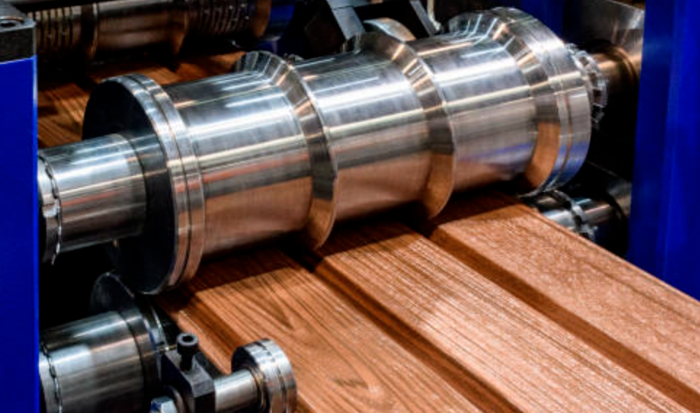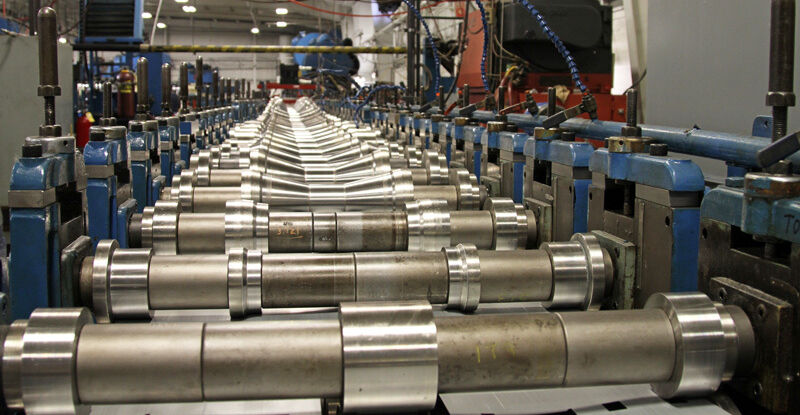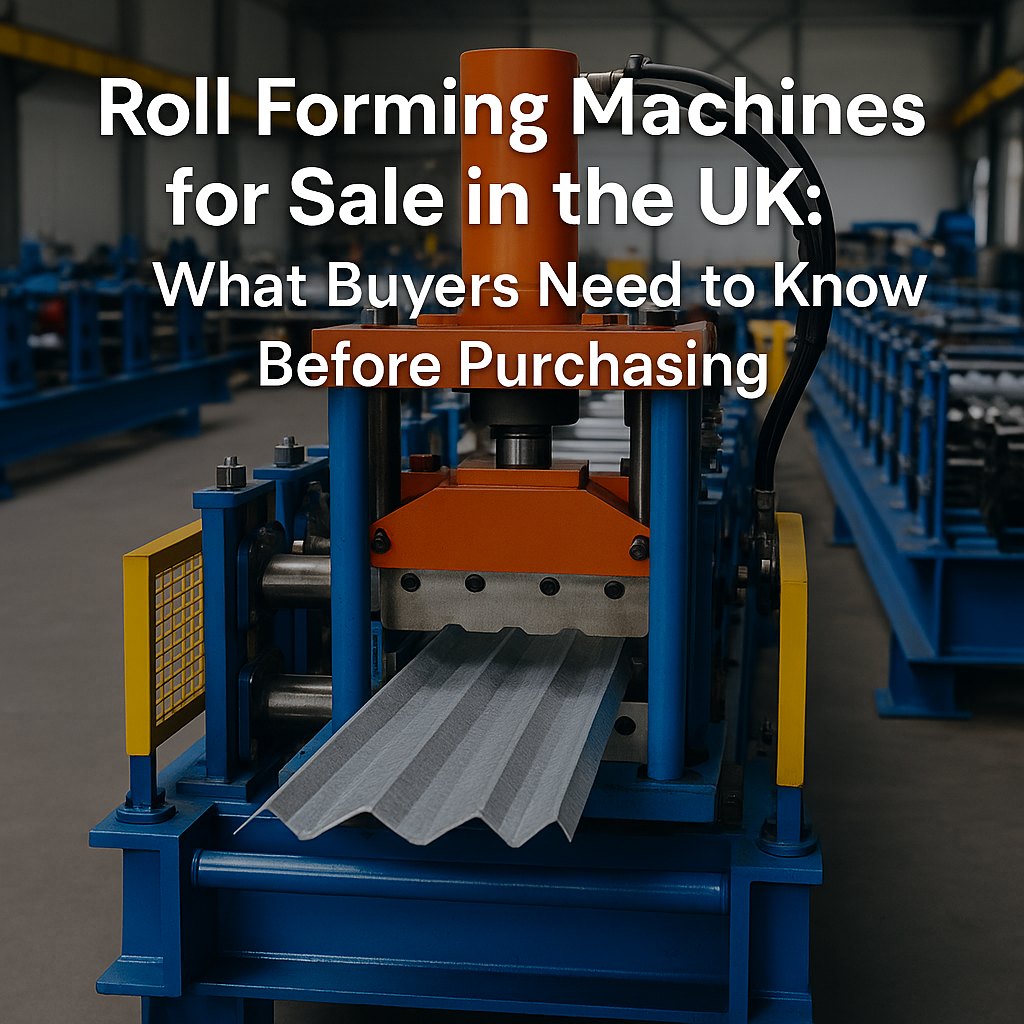
Posted on Wednesday, September 24, 2025
Roll forming machines rely on precise synchronization between material feed, tooling, and cutoff systems. At the heart of this precision lies the encoder—a device that converts rotational motion into electronic signals that the machine’s controller (PLC or CNC) can interpret.
Encoders ensure:
Accurate cut-to-length measurements
Smooth synchronization of flying shears or cut-off presses
Stable line speed control
Consistent part quality
When an encoder fails, operators quickly notice issues such as incorrect product lengths, machine alarms, or irregular cuts. Understanding how to safely replace and test a broken encoder is crucial for maintaining production efficiency.
Before replacement, it’s important to confirm that the encoder is indeed the problem. Typical failure symptoms include:
Incorrect cut lengths (too long, too short, or inconsistent)
No length feedback on the HMI or PLC diagnostics screen
Machine error codes related to positioning or feedback loss
Vibration-sensitive failures (works sometimes, fails at high speeds)
Physical damage to the encoder housing or cable
If one or more of these symptoms occur, and other mechanical causes are ruled out, the encoder is likely at fault.
To replace an encoder, gather the following:
Replacement encoder (must match old model specs)
Allen keys or screwdriver set
Socket set or small adjustable wrench
Medium-strength thread locker (optional)
Multimeter (to check wiring and signals)
Clean rags, flashlight, and inspection mirror
Camera or phone (to record wiring before disassembly)
Shut Down and Lock Out Power
Always disconnect the main power supply and apply lockout/tagout.
Wait until the machine is completely still.
Identify Encoder Type and Mounting
Check if it’s a shaft encoder, hollow bore encoder, or measuring wheel type.
Note whether it’s incremental (pulse-based) or absolute (position tracking).
Document Existing Setup
Take clear photos of wiring and mounting.
Record encoder model, resolution (PPR/CPT), voltage, and output type (TTL, HTL, differential).
Encoders are usually mounted on:
The main drive motor shaft
The gearbox output shaft
A measuring wheel assembly contacting the sheet
Loosen the screws or clamps securing the encoder.
If shaft-mounted, carefully loosen the coupling set screw.
Gently slide the encoder off the shaft.
Inspect the shaft for burrs, dirt, or oil—clean as needed.
⚠️ Tip: Avoid using force; any shaft damage can cause future misalignment.
Align the encoder shaft or hollow bore with the machine shaft.
Gently slide into place without axial pressure.
Secure using screws, clamps, or a coupling.
Apply medium-strength thread locker if vibration is common.
✅ The encoder should sit flush, without tilt or offset.
Match each wire to its correct terminal using your photos or wiring diagram.
Typical connections include:
V+ (supply voltage, usually 5–24V DC)
0V (ground)
A, B (quadrature signals)
Z (index/reference pulse, optional)
Ensure cable shielding is grounded to prevent electrical noise.
Restore power and jog the machine slowly.
Observe encoder feedback on the HMI/PLC screen.
Run test cuts and measure length accuracy.
Depending on your control system:
Set encoder zero point or home position if required.
Adjust pulses-per-length scaling in the PLC/HMI.
Perform multiple test cuts at different lengths to confirm precision.
If problems persist:
No Signal at All → Check power supply voltage, wiring, and polarity.
Wrong Lengths → Verify encoder resolution matches PLC settings.
Reverse Direction Error → Swap A and B signal wires.
Unstable or Noisy Readings → Check grounding, shielding, and cable routing.
Q: Can I use a higher-resolution encoder as a replacement?
A: Yes, if your PLC supports it. However, using a different resolution requires reprogramming length-scaling settings.
Q: What’s the difference between incremental and absolute encoders?
A: Incremental encoders count pulses for distance/speed. Absolute encoders provide a fixed position reference even after power loss. Most roll forming machines use incremental encoders.
Q: How often should encoders be replaced?
A: Encoders can last years, but exposure to vibration, dust, oil, or cable stress shortens lifespan. Keep spares on hand for critical production lines.
Q: Can encoder failure damage the machine?
A: Usually no, but it can cause incorrect cuts, wasted material, and lost production time.
Q: Should I recalibrate after every encoder replacement?
A: Yes. Even if specifications are identical, mechanical tolerances and PLC settings must be verified for accuracy.
Keep at least one spare encoder in stock for each machine model.
Document encoder model numbers, wiring diagrams, and PLC settings in your maintenance log.
Inspect encoder cables regularly for cuts, crushing, or wear.
Avoid routing encoder cables near high-voltage lines to reduce interference.
Perform preventive checks during routine machine servicing.
Encoders are small but vital components in roll forming machines. A failed encoder can stop production or lead to costly scrap from incorrect lengths. By following the steps in this guide—safe shutdown, careful removal, proper installation, wiring, and calibration—you can quickly restore accuracy and reliability to your machine.
Keeping spare encoders, maintaining proper documentation, and training operators on early fault detection ensures minimal downtime and consistent product quality.

Most Popular Roll Forming Machines in the United Kingdom
Posted on Thursday, December 11, 2025
This blog breaks down the five most in-demand roll forming machines in the UK

Can I Finance a Roll Forming Machine?
Posted on Thursday, December 11, 2025
Financing a roll forming machine is easier than most buyers think. Here’s how leases, loans, and payment plans make production affordable.

Roll Forming Machines for Sale in the UK: What Buyers Need to Know Before Purchasing
Posted on Thursday, December 11, 2025
This complete guide explains everything UK buyers must know before purchasing, including machine types, voltage requirements, CE/UKCA compliance

Roll Forming Machines for Sale in the USA: What Buyers Need to Know Before Purchasing
Posted on Wednesday, December 10, 2025
This guide explains everything U.S. buyers need to know before purchasing a roll forming machine, including machine types, pricing, voltage
Copyright 2026 © Machine Matcher.